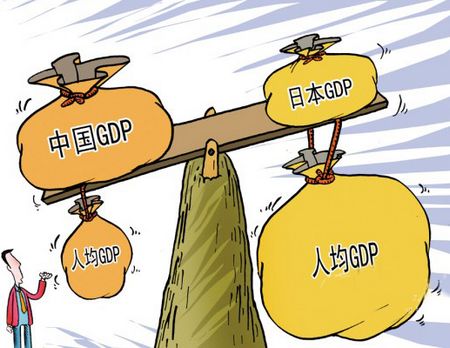 The National Bureau of Statistics recently released data and initially estimated that China’s gross domestic product (GDP) in 2010 was 397.983 billion yuan, up by 10.3% over the previous year. The growth rate was 1.1 percentage points higher than that of the previous year, and it had surpassed Japan (5.44 trillion US dollars). , becoming the second largest economy in the world.
The National Bureau of Statistics recently released data and initially estimated that China’s gross domestic product (GDP) in 2010 was 397.983 billion yuan, up by 10.3% over the previous year. The growth rate was 1.1 percentage points higher than that of the previous year, and it had surpassed Japan (5.44 trillion US dollars). , becoming the second largest economy in the world. In terms of sub-industries, the primary industry's added value was 4.0497 trillion yuan, an increase of 4.3%; the secondary industry's added value was 1,86481 billion yuan, an increase of 12.2%; the tertiary industry's added value was 1,700.5 billion yuan, an increase of 9.5%.
Obviously, the secondary industry of the country’s backbone has achieved the highest number of gross domestic product with remarkable results. Hardware, electromechanical, etc., as an important part of the secondary industry, have faced a surging international situation in 2010: the global financial crisis has left smoke, the exchange rate has taken a big step and raw materials continue to rise, but it has maintained a steady and rapid development. The local hardware and electromechanical industries have grown rapidly and their international status has gradually become clear.
Relevant parties disclosed that in 2010, the import and export of Chinese mechanical and electrical products reached US$159.75 billion, which was a year-on-year increase of 32.3%, which was more than US$233.5 billion more than the highest previous year in 2008. At present, the structure of China's mechanical and electrical products has been significantly improved. Products with higher technical content and additional value, such as automobiles, ships, and aircraft, have become the main growth targets for new exports. The competitive advantages of large-scale complete sets of equipment such as power, communications, and railways have become increasingly evident.
China's export market for electromechanical products has reached 225 countries and regions. Emerging market share has increased from 26.1% to 33.1%, with an increase of more than 40%.
From the perspective of profitability indicators, in the first half of 2010, the sales and sales rate of the hardware industry has been ups and downs, but has remained at a high level. The accumulated production and sales ratio is 97.25%, slightly higher than the level of the same period of last year. Among them, construction and safety metal products are the industries with the highest profit growth in the hardware industry. The accumulated profit from January to May increased by 160.87% year-on-year, and the number of loss-making enterprises above the scale of the hardware industry in China was 1,321, with an industry loss of 15.48% compared to 2009. The year-on-year decline was 8.31 percentage points. The accumulated losses of the industry were 31.87 percentage points lower than the same period of last year, which all contributed to the improvement of the profits of the hardware industry.
Total production of locks increased by 21.95% year-on-year, cumulative production of stainless steel daily-use products increased by 30.52% year-on-year, cumulative production of gas water heaters increased by 28.26% year-on-year, and cumulative production of gas stoves increased by 0.86% year-on-year. The total output of all types of hardware products in the hardware industry increased year-on-year to positive growth, and, with the exception of domestic gas cookers, the cumulative growth rate of other types of products exceeded more than 20%.
However, while affirming achievements, China's hardware industry must still clearly recognize the existing deficiencies. Some deep-rooted contradictions and structural problems in the hardware industry have not yet been fundamentally resolved: trade is not strong, there are not many independent brand products, the mode of growth is relatively extensive, and regional development is not balanced. All these need to be resolved in 2011 by changing the mode of development in the “Twelfth Five-Year Plan†period. We will strive to achieve breakthroughs in such five areas as structural adjustment, market diversification, transformation and upgrading of processing trade, internationalization of emerging industries, and import strategy.
In addition, the electromechanical industry needs to strengthen its independent innovation capabilities in the green economy sectors such as energy conservation and environmental protection, low-carbon technologies, and circular economy this year, and make every effort to contribute the most to China's overall economic development.
